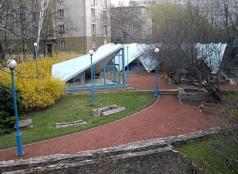The Civil Town Amphitheatre
Római örökség
The Civil Town amphitheatre, the smaller of Aquincum's two amphitheatres, lies beyond the northern wall of the town.
The northern town wall and gate
Római örökség
The Civil Town had a town wall from at least the first half of the 2nd century.
Aqueduct
Római örökség
Mineral springs still flowing in modern-day Római Strandfürdő (Roman Lido) supplied one of the greatest architectural feats of Roman Budapest, the aqueduct.
The eastern gate of the legionary fortress, the porta praetoria
Római örökség
The main gate of the legionary fortress was facing the Danube and the enemy.
The southern gate of the fortress, the porta principalis dextra
Római örökség
The porta principalis dextra, in its currently restored form, was built in the second half of the 2nd century.
The baths of the legionary fortress, the Thermae Maiores
Római örökség
One of the halls of the baths of the legionary fortress was found in 1778, during the first archaeological excavation in Aquincum.
Hercules Villa
Római örökség
The row of luxurious town houses built in the northern strip of the extensive Military Town surrounding the legionary fortress in Óbuda formed the elegant district of the settlement. Also located here was the Hercules villa – richly decorated with mosaics and wall paintings – the owner of which was likely a member of the elite living in the provincial capital.
The ruins of a barrack block and sanctuary
Római örökség
The ruins are at the intersection of Vöröskereszt Street and Miklós Street.
The Cella Trichora
Római örökség
The remains of an Early Christian burial chapel at the corner of Körte Street, Hunor Street and Raktár Street.
Inn and house
Római örökség
The inn and house excavated in the southern half of the Military Town are exhibited in the Military Town Museum.












